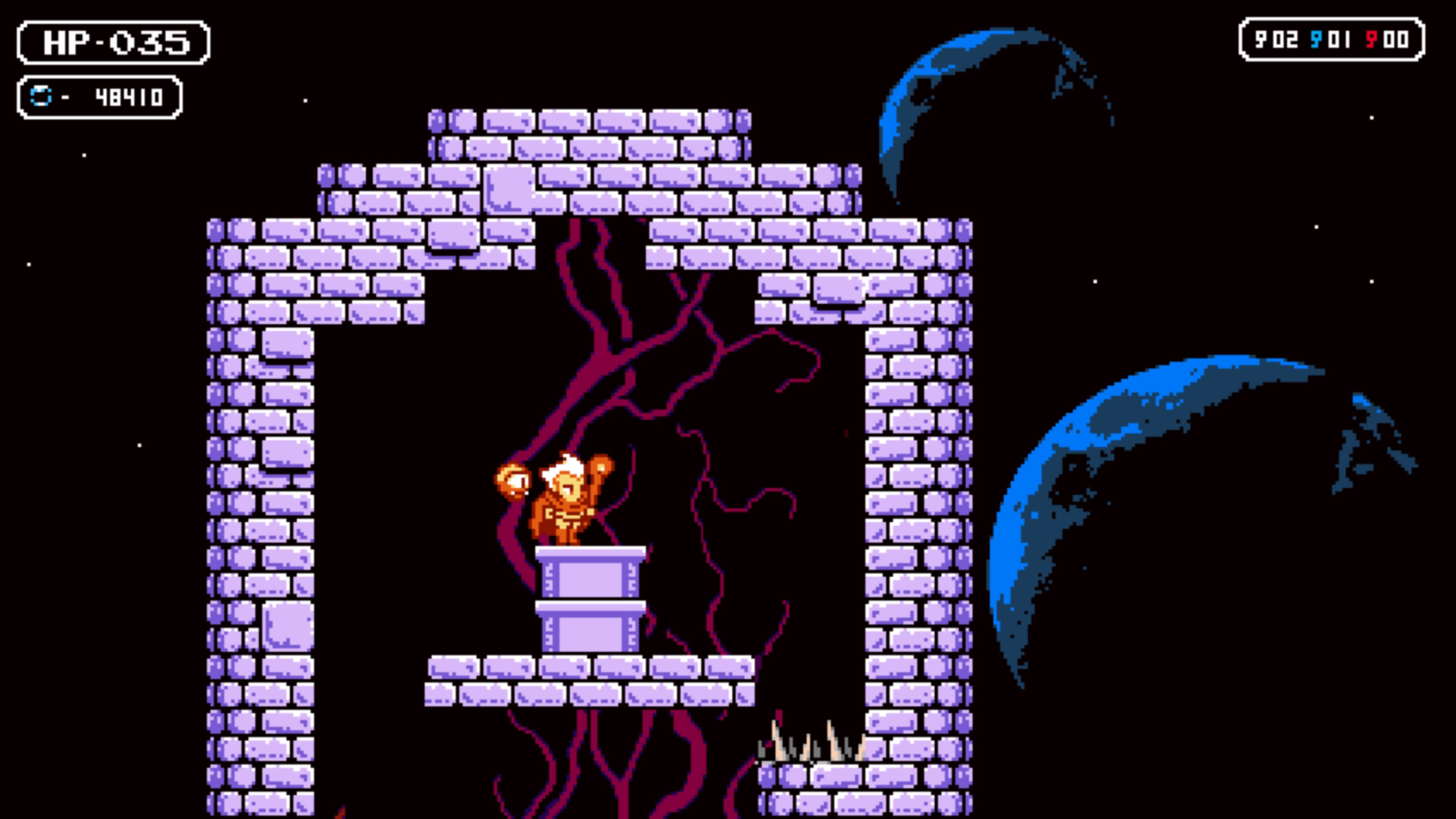The modern Metroidvania had a vintage year, but the simplest one is the best

In addition to our main Game of the Year Awards 2021, each member of the PC Gamer team is shining a spotlight on a game they loved this year. We'll post new staff picks, alongside our main awards, throughout the rest of the month.
Praise be the staunchly uninnovative modern indie Metroidvania. There are a lot of them, and like Desmond Hume in Lost, with his reserve of Dickens novels, I have to practice restraint so that I'll never run out.
Not that I'll likely ever run out of games in this style: 2021 was a huge year for the exploration-platformer genre. Axiom Verge 2, Ender Lilies, Aeterna Noctis, F.I.S.T and Greak: Memories of Azur are among the heavy hitters, and that's without mentioning Metroid Dread, which is already on PC via emulation. But my favourite Metroidvania of 2021—favourite overall game, really—is Astalon: Tears of the Earth. It's that rare breed of game that feels like it was an absolute joy to make, a real labour of love.

Like a lot of modern Metroidvanias, it has a few vaguely novel twists. Astalon has several playable characters who you can swap between on the fly, representing fairly typical RPG-style archetypes. Each has a different combat style—Algus shoots fireballs, Arias uses a sword, Kyuli a bow and arrow—and each accumulates their own array of map-expanding power-ups. These include Kyuli's ability to endlessly scale walls, Algus's handy Cloak of Levitation, and Arias' power to cut through otherwise impenetrable walls.
While Astalon requires patience—especially when it comes to navigating the labyrinthine tower—it isn't deliberately difficult.
The objective is to climb to the top of a sprawling tower in order to, uh, reverse the apocalypse or something. When you die, you respawn at the entry, but don't worry: It's not a roguelite, and gradually unlocked shortcuts get you back to where you want to be pretty quickly. It's a lot less punishing than Hollow Knight, and while Astalon requires patience—especially when it comes to navigating the labyrinthine tower—it isn't deliberately difficult.
And that's it, those are the twists. This is about as orthodox a Metroidvania as you'll find on Steam, and whether you dig it or not will hinge on the 8-bit art style. For me, playing any game with gorgeous pixel art can paper over any minor problems elsewhere, and the pixel art in Astalon is the work of one of the best in the biz: Matt Kapp of Castle in the Darkness, 1001 Spikes, and The Binding of Isaac: Rebirth fame.

I played a bunch of pixel art platformers as a kid of the '90s, especially of the Apogee shareware variety, but I don't think pure nostalgia is the reason I increasingly turn to these games instead of the loud seasonal blockbusters. There's a lot to love about modern games in 2021—they're looking better, they're getting smarter, and there's a ridiculous abundance of them—but appallingly, to me at least: they never end. As engagement metrics become as important as raw sales figures, it's rare for a big, heavily marketed, purportedly cutting-edge videogame to be finished by the average mortal. They want me to log in all the time, to complete bizarre challenges, and they email me when I leave them unfinished.
Sometimes this desire to lay claim to all of my attention strikes me as cynical, but maybe that's because I'm as prone as others are for gratification—to hit a level cap, to unlock a cosmetic, to hear the ping of a Steam achievement. I don't like these impulses, but I sure as hell feel them.

But as a salve for the tension this zeitgeisty approach to game design provokes in me, I'm increasingly drawn to little games like Astalon—games you can either take or leave, that aren't released to any real fanfare, that never enter the discourse, that just exist to be stumbled upon and savoured. Astalon and its ilk feel like the game equivalent to zine culture or the still flourishing demoscene: small, intimate artefacts made by passionate enthusiasts, at odds with the lightning speed growth-oriented culture that surrounds them. You play it, you love it, you move on, and you maybe revisit it some day. Astalon positively reeks of the joy of creation, which almost always means you're in safe hands.
And at the risk of sounding even more like a turd than I have already, I just find Astalon's pixel art soulful. There's so much expressionistic verve juiced from its 256-color gamut, so much room for imagination and interpretation in its necessarily unrealistic environments. Maybe you'll accuse me of being a fundamentalist (I'll cop to it, for now), but this is exactly a game, in the sense that I grew up with: a big strange world to explore, with a big dumb story you can safely ignore, with a certain chunky, textural quality that belongs—was created by—our beloved medium. Oops, and that's me being blatantly nostalgic.

Post a Comment